This time I'm going to show you how to make some practical devices with a cheap compact ZVS driver module sold on AliExpress for less than $5.

The package contains an assembled solder module and a coil for making an induction heater. The module is solidly made and we will first test it as an induction heater, which is what it is primarily intended for. Then we will see how we can use this compact module to make other devices.
On the PCB there are two N-channel power MOSFETs of the H6LG type designed for low voltage, high speed switching applications in power supplies intended for Drain current up to 20 Amps. Due to the low Rds resistance of only 39 milliohms, there is no need for massive aluminum heatsinks, and they are soldered directly to the metal part of the PCB that serves as a heatsink. It also has two quality MKP capacitors, two large chokes, and several small SMD components. The device can be powered with voltage from 5 to 12 volts, and current up to 10 Amps.
First we will test an induction heater with a voltage of 5V. After a certain time, the steel plate heats up, but it does not bend strongly.
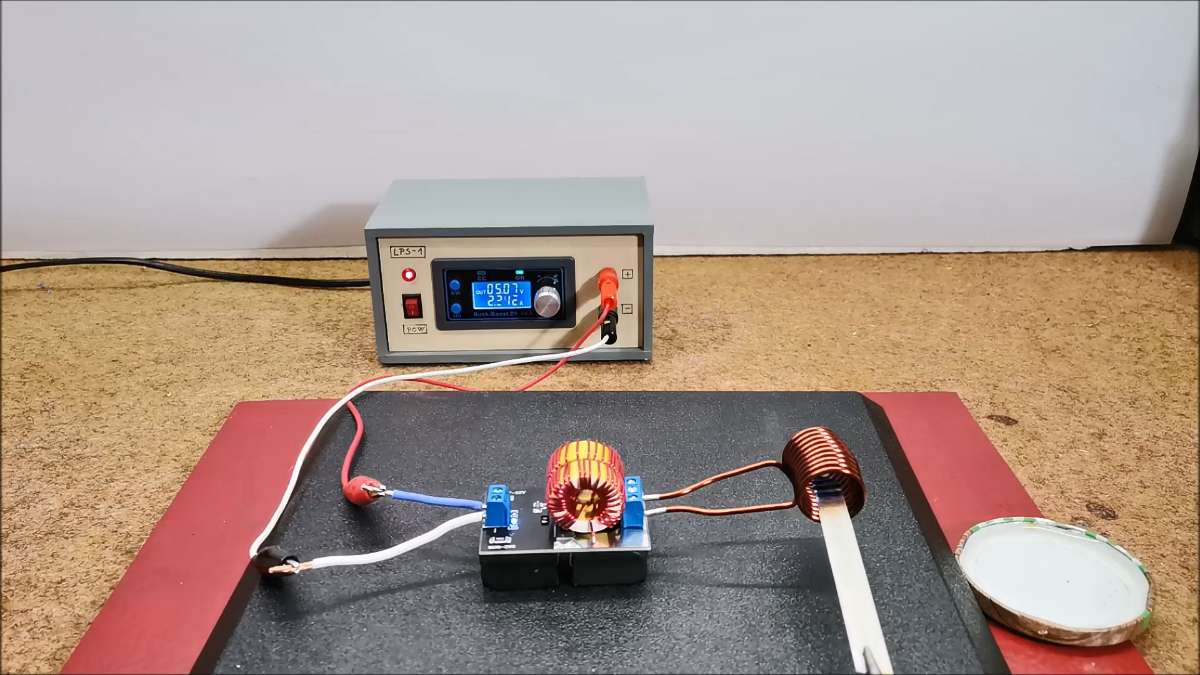
Next, at 10 volts when heating this small drill, the current is about 3 A. Now we see that the metal is dawning.
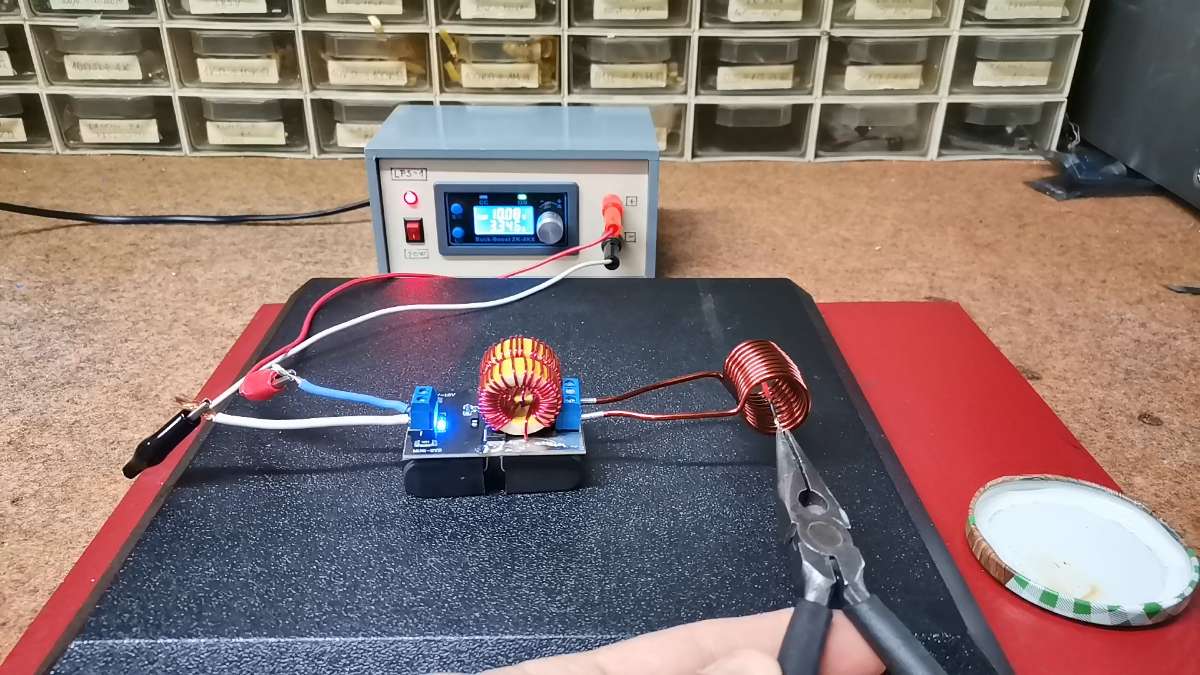
For 12V I will use bigger power supply because it can deliver a higher current.
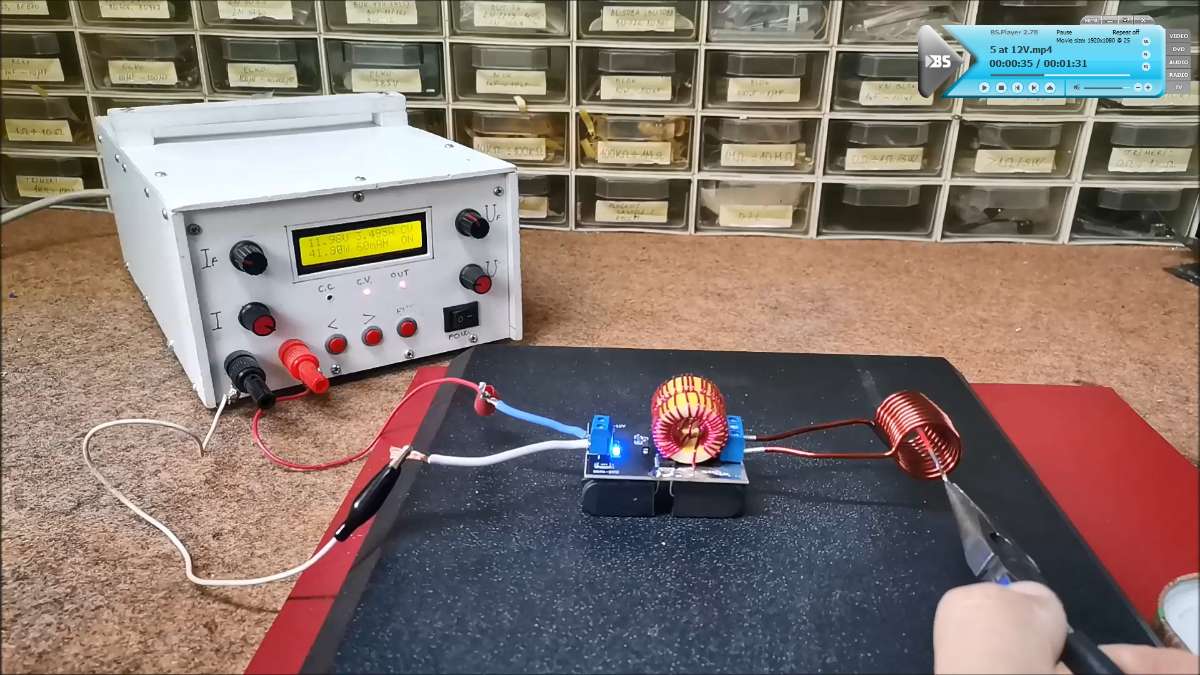
If you want to make a PCB for your electronic project, PCBway (https://www.pcbway.com/?from=MirkoP) is a great choice for you. PCBway is one of the most experienced PCB manufacturing company in China in field of PCB prototype and fabrication. They provide completed PCB assembly service with worldwide free shipping , and ISO9001 quality control system. Also, on their site there is an online gerber viewer where you can upload your gerber and drill files to render your board.

The next device we can make with this module is a high voltage source for our HV experiments
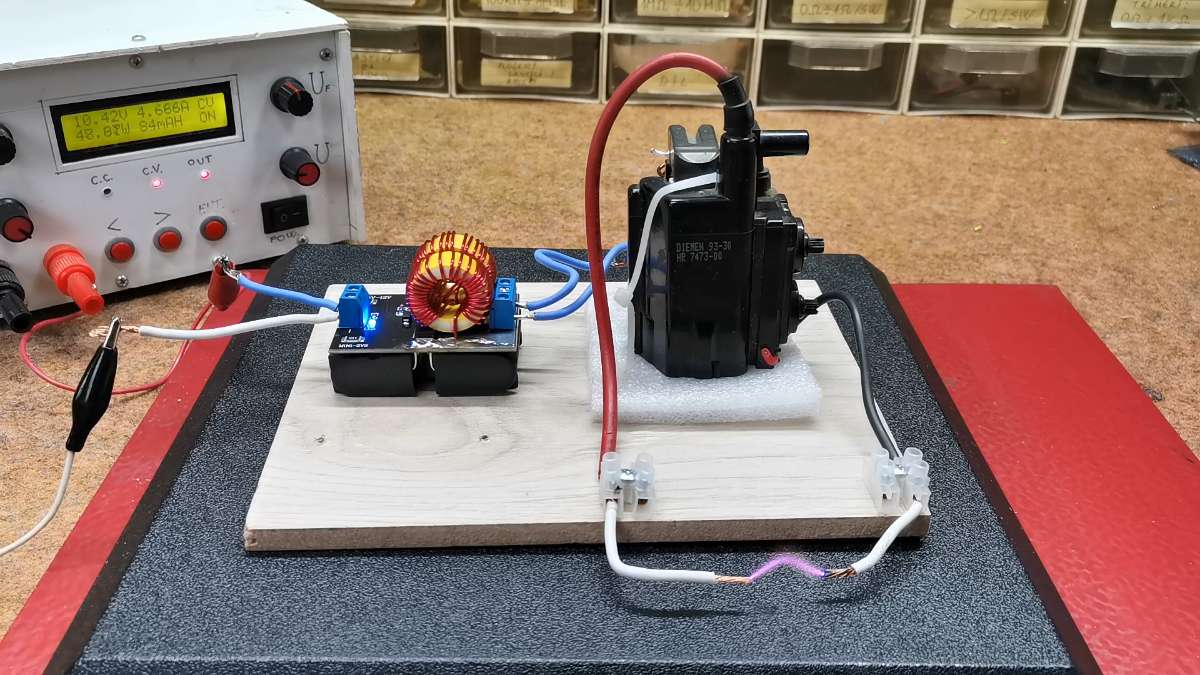
For that we need Trafocascade from an old CRT monitor or TV. We need to wind 10 windings with insulated copper wire with a diameter of 1 to 1.5 mm on the core of the transformer and connect the ends to the output of the module. Spark is about 2cm long, and transistors are almost cool.
And the last experiment is about wireless energy transfer, for which we need a copper or aluminum wire with a diameter of 1.5 mm, which we form two identical circles, with a diameter of 10 cm.
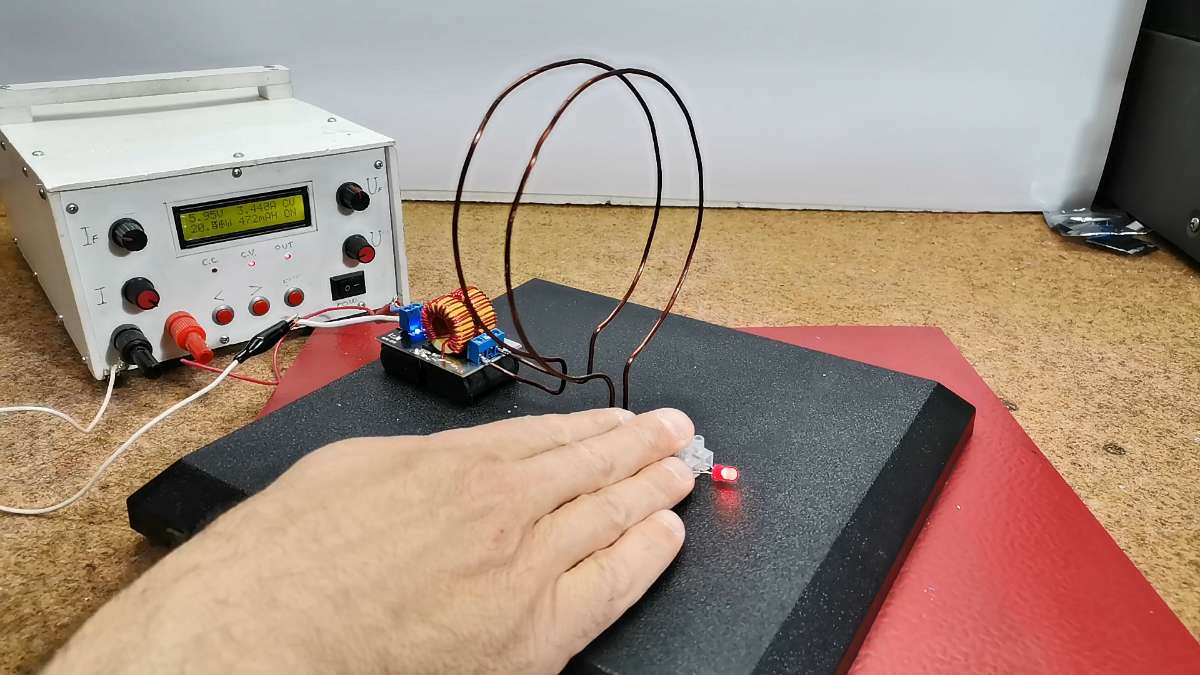
One circle is a transmitter and is connected to the ZVS module, and the other is a receiver, and an LED diode is connected to its ends. I made this experiment in a short time without any calculations, and if you are interested in a serious project like this, you can watch one of my previous videos, where a 10W LED is powered wirelessly at a distance of up to 90cm.
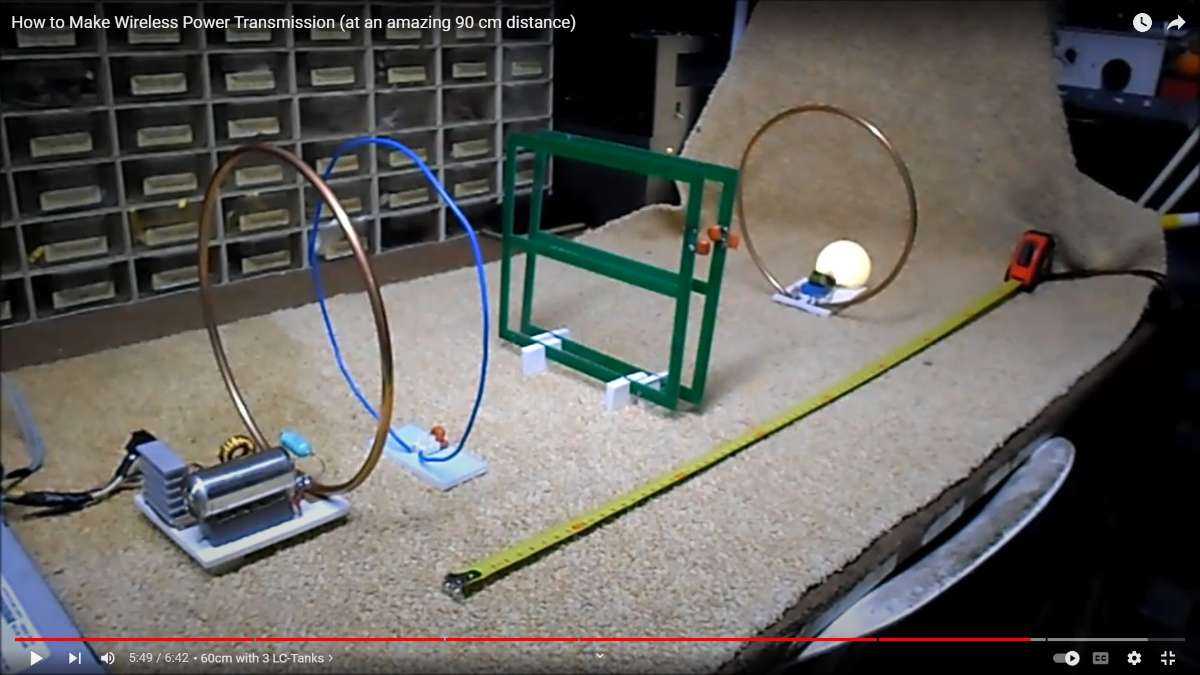
And finally a short conclusion. As I mentioned at the beginning, this module costs less than $5 with postage, so we shouldn't expect any spectacular features. However, it performs the function for which it is intended quite correctly, and I think that its limit for reliable operation is about 5A at 12V, which is half of what is declared by the seller. At higher currents, the mosfets heat up significantly and their burnout can happen very easily. But 60 Watts are quite enough, and as seen in the experiments, the module can work continuously for a relatively long time without problems.
